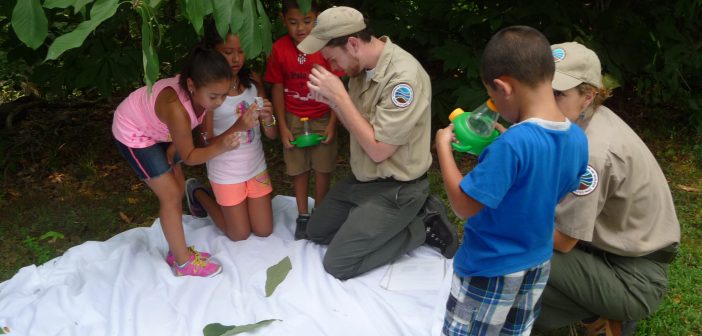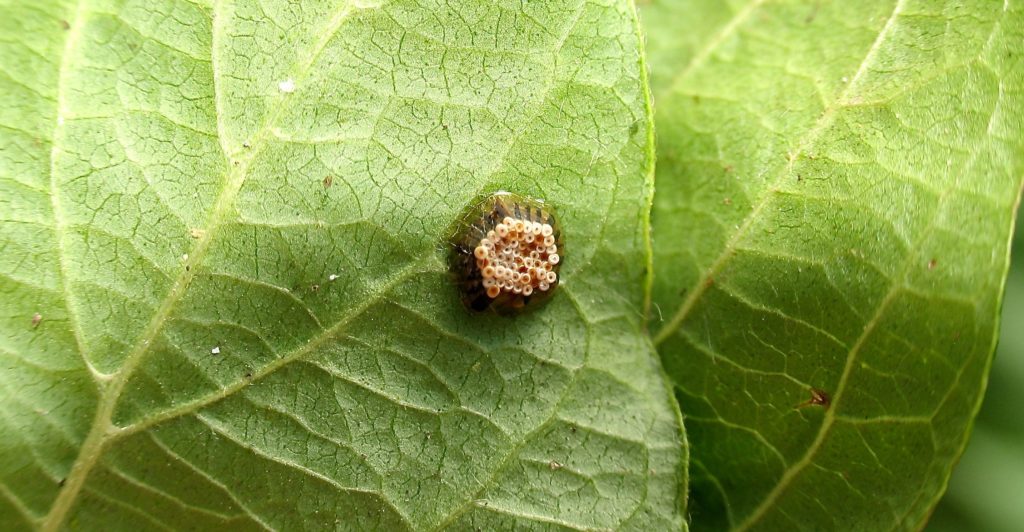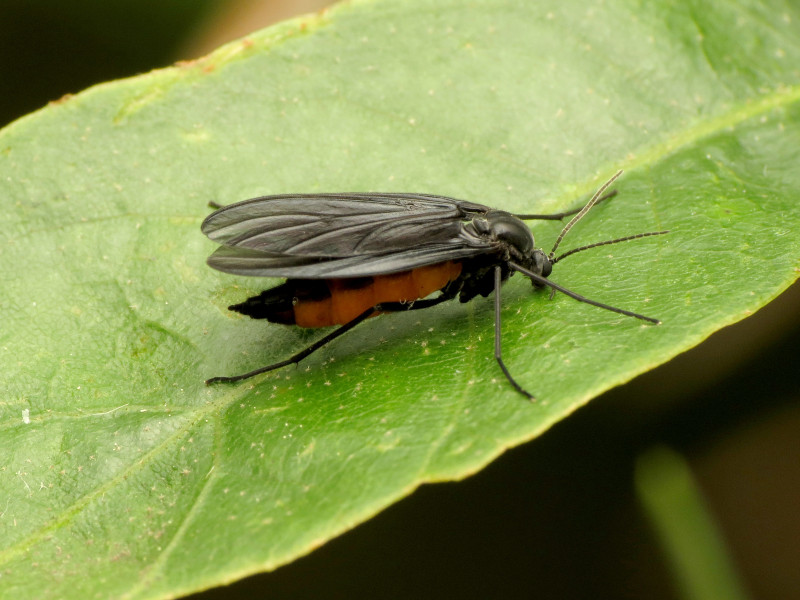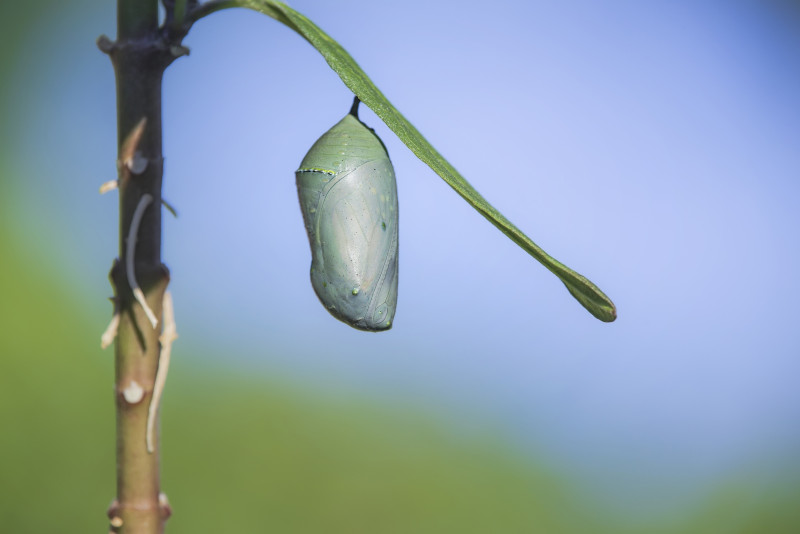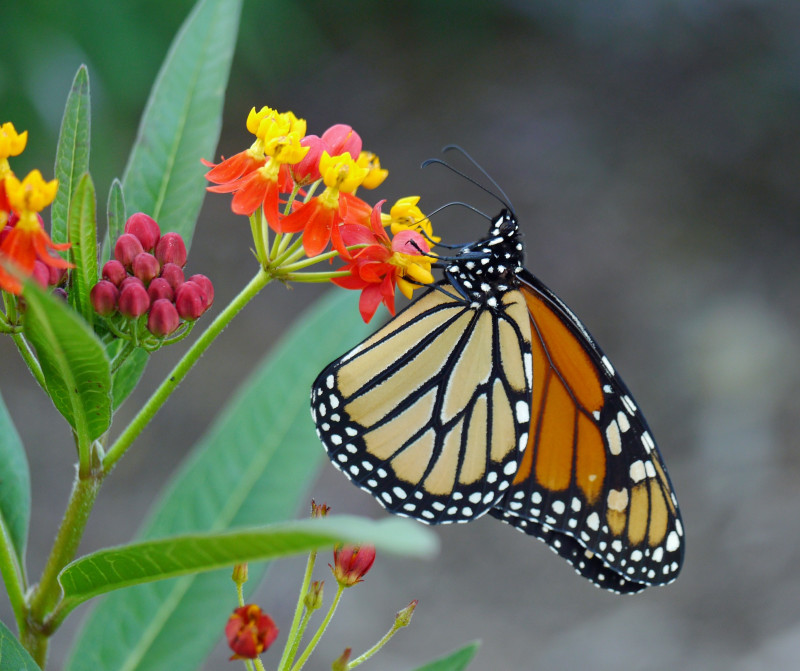Curious about the life cycle of insects? Then let’s start with that familiar question, “Which came first, the chicken or the egg?” Well, opinions vary as to the answer, but we do know that every living organism has at least one parent. So, let’s start with the “chicken!”
Just think about it—all the ladybugs we see on flowers and the ants streaming across the picnic table have a mother and father. Butterflies, crickets, praying mantises, and all the other insects came about because of a male and female who performed courtship behavior unique to their species and ultimately had an “intimate” moment. In some species, mom or dad nurtures and protects their young after they’re “born.”
Courtship
Here are the ways insects court each other.
- Visual signals (fireflies) and sight (butterflies)
- Sound (cicadas and crickets)
- Stroking (fruit flies)
- Gifts (scorpionflies)
- Flight displays (scorpionflies)
- Pheromones (Most insects. They induce a particular behavioral response in others of the same species)
Insect mating
Mating might occur during the day or at night. It may happen on land, in water, or in the air. They’re primarily performed “dog-style” or end-to-end, but there are many variations, a few of them bizarre. Bedbugs, for example, take copulation to a violent extreme—the male pierces the female’s body with his needle-like genitalia and ejaculates directly into her body cavity, a process called (unsurprisingly) “traumatic insemination.” On the other hand, Preying Mantis males are at the mercy of females because sometimes, after mating, a hungry female will chomp off her suitor’s head and gobble him right up!
Bedbugs aren’t the only insects with unusual penises: Some species have a brush on the tip or one that’s football-shaped. The earwig male has the bragging rights to two penises and can choose which one he wants to use! Springtail males inseminate secondhand: They string packets of sperm in a circle around a female, and she collects one into her genital opening, essentially fertilizing herself. There are other weird-sex stories like this in the insect world, which you can learn about on other pages of WelcomeWildlife.com.
Entomologists refer to the reproductive organs of insects as genitalia, just as with humans. But a female insect’s equivalent of a vagina is called the “bursa copulatrix.” She also has two ovaries. Males have two testes and a penis (to us), or “aedeagus” (ee-DEE-uh-gus) in entomologist lingo. Males and females also have glands and gender-appropriate structures for egg storage or sperm storage and the like. The male also has a “clasper,” which he uses to hold on to the female during copulation.
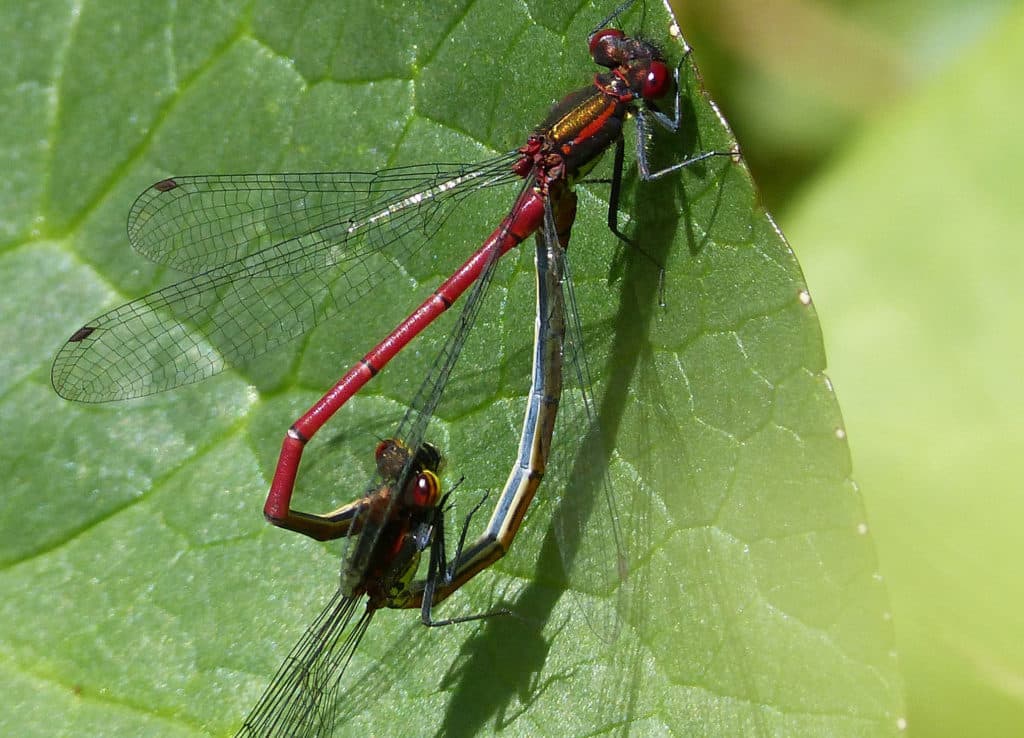
When damselflies mate, they often form a conspicuous “heart shape” with their bodies. The red male, at the top here, has grasped the female right behind her eyes with his clasper located at the end of his abdomen. She has curled her abdomen to connect her genitals with his. (Gail Hampshire / Flickr; CC BY 2.0)
Most female insects deposit eggs in their chosen environment through their ovipositor, a tube-like organ that projects from the end of their abdomen. There are some species, such as aphids, that give birth to live young through a process called ovoviviparity. And a few, such as some wasp species, reproduce asexually, leaving males entirely out of the equation.
Insects go through one of two different life cycles: Complete metamorphosis or incomplete metamorphosis.
Complete metamorphosis
The vast majority of insects go through complete metamorphosis (technically, holometabolism), a four-stage progression: Egg to larva to pupa to adult. Here’s how it happens:
Egg stage:
An insect emerges from an egg laid by its mother on a “host” plant or another favorable environment. The location she chose for her eggs offers an immediate food source, such as a plant’s leaf, for the young hatchlings. When first laid, the egg may be no bigger than the period at the end of this sentence.
Females produce more than one egg. Some lay hundreds—nature’s way of ensuring that at least a few offspring will survive. Depending on the species, eggs may be laid singly or in a case that contains dozens. They may be laid in or on plants, in or on the soil, in yard debris, in water, and about anywhere else that offers food for the hatchlings, called larvae (LAR-vee; sing: LAR-vuh).
Larva stage:
At this stage, an insect is still immature and looks very different from its parents. Although technically called larvae, some are familiar to us by other names—a butterfly or moth larva might be called a caterpillar, and a fly larva called a maggot.
A larva doesn’t mate or reproduce. Its sole job is to eat and grow, to take in the nutrients it will need for the next chapter of its life. We might see it as it grows, but more likely, we take notice of an herbivorous caterpillar’s path of destruction—holes in leaves and tree trunks, leaves that are skeletonized or have chewed edges, flowers literally nipped in the bud, and fruits and veggies with bites taken out. Sometimes even teeny teeth marks can be discerned.
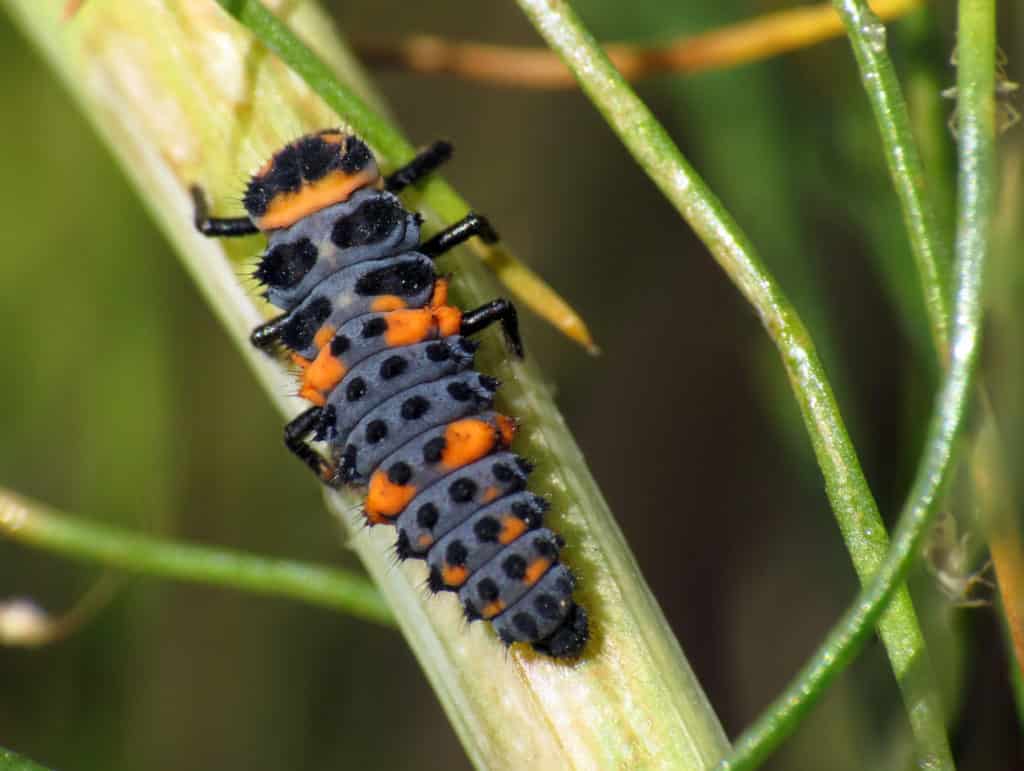
Lady beetle larva; possibly a Convergent Lady Beetle, Hippodamia convergens (Katja Schulz / Flickr; CC BY 2.0)
Some larvae are carnivorous, ferocious predators. Ladybird beetle (ladybugs) larvae are an example. They look like tiny dragons, and they’re merciless hunting machines, eating just about anything small enough for them to overpower. A few species are parasites attached to or growing within a host’s body. The larvae of some insects, such as mosquitos and mayflies, live in water. Aquatic larvae are often called nymphs or naiads.
Larvae come in all sizes, with some growing very large. One example is the Tomato Hornworm, Manduca quinquemaculata, the caterpillar of the Five-spotted Sphinx Moth, which grows up to 3.9 inches (10 cm) long. Minuscule at first, they eventually become easy to spot as they grow fat from munching on their favorite food, tomato plants.
Most insect larvae are worm-like in shape and have legs. Some exceptions are fly larvae, those white, wormy, squirmy things we call maggots, and beetle larvae, which are usually whitish and commonly called grubs, or brownish and called wireworms.
A larva’s skin can stretch only so far as it grows, so it’s shed several times in a process called molting. There’s a name for the stage between molts: instar. When a larva hatches, it’s a “first instar.” After it molts for the first time, it’s a second instar, and after the second molt, it’s a third instar, and so on. There may be anywhere between six and eleven molts, depending on the species.
Pupa stage:
After feeding for about two weeks, the larva will enter the pupa (pYOU-puh) stage. But, beforehand, it constructs a protective case around itself, called either a cocoon or a chrysalis, depending on the kind of insect. Then, while wrapped away, so to speak, the larva pupates, meaning its body will transform. Embryonic cells will slowly develop into adult features—jointed legs, mouthparts, eyes, wings, sex organs, antennae, and more. Depending on the species, a pupa may remain at this stage for a few days up to months or years.
The form and color of cocoons and chrysalises vary. Some insects spin a silk cocoon. Others make one from their sticky saliva mixed with mud, sand, dead leaves, or wood. A cocoon may also be just one of the cells in a nest full of cells constructed by the parent. They may be buried or hanging from or within foliage. They may be loose or tight, soft or hard, or have many layers.
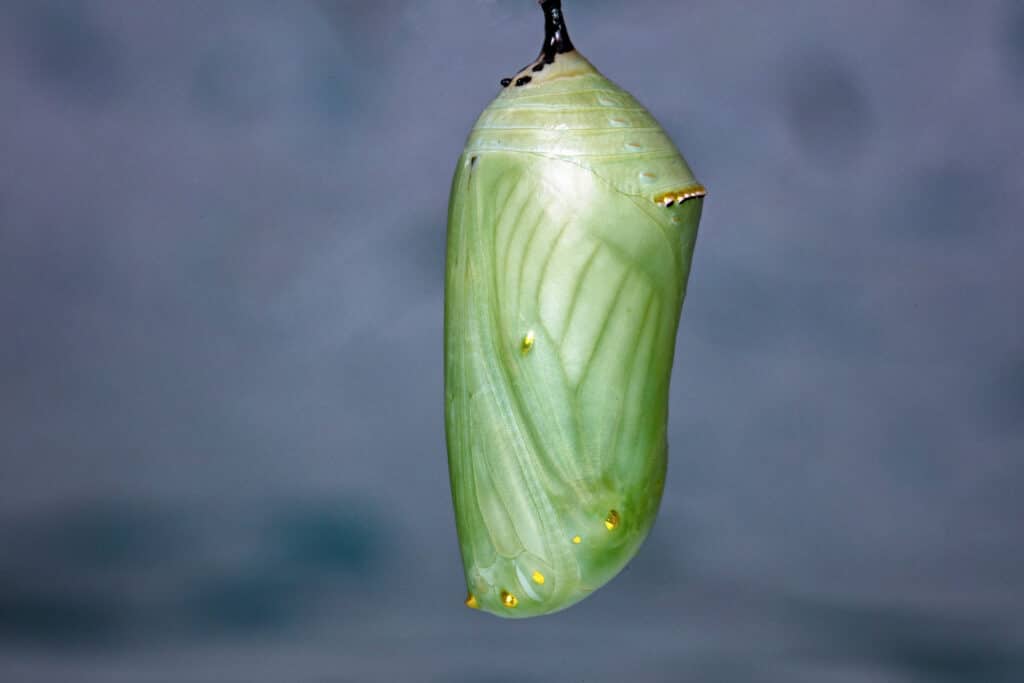
Monarch chrysalis. Its developing wings can be seen through the semi-transparent shell. (Lorie Shaull / Flickr; CC BY 2.0)

Cocoon of a Red Palm Weevil, Rhynchophorus ferrugineus, an Asian species. (Judy Gallagher / Flickr; CC BY-SA 2.0)
It’s a dramatic moment when an insect splits through its cocoon or chrysalis: a full-sized adult emerges, ready to feed, mate, and complete the last stage of its life. All its growing time is done. For instance, when we see a tiny fly, it isn’t a young one still growing; it’s a full-sized member of a tiny-fly species. The new adult will probably eat (those of some species don’t eat at all) solely to take in sufficient nutrients for mating and, for females, egg production. Mayflies live only one or two days, but most insects live longer, from a week or two up to a year or more.
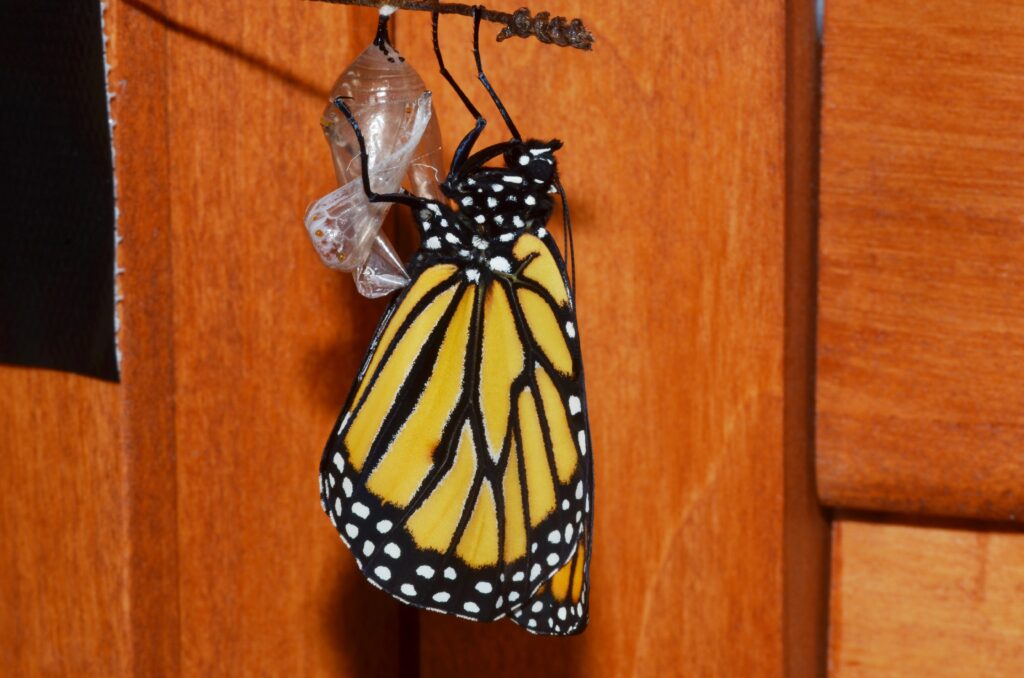
Newly emerged Monarch Butterfly clinging to its now-empty chrysalis (Andy Reago & Chrissy McClarren / Flickr; CC BY 2.0)
Incomplete metamorphosis
About 12 percent of insects go through incomplete metamorphosis (hemimetabolism). This form of development has three stages: egg, nymph, and adult.
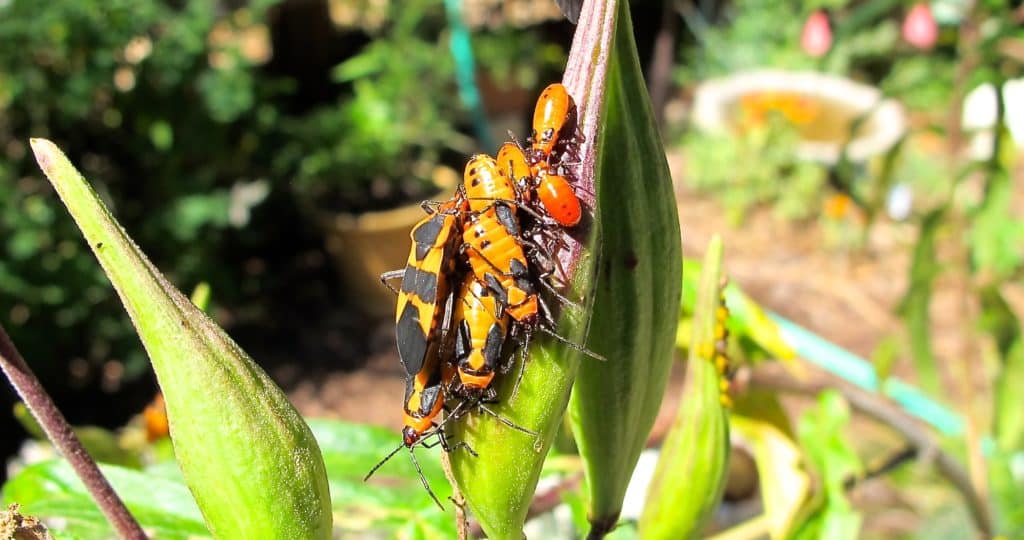
Adult Large Milkweed Bug, Oncopeltus fasciatus, at the left, with its nymphs at various stages of growth. (WW; CC BY-NC-SA 3.0)
Hemimetabolous insects don’t pupate, and the offspring look at least a bit like their parents from the moment they hatch, except they’re sexually immature and have no wings. Most eat the same foods as their parents. As they eat and grow, they molt several times to accommodate their enlarging bodies. Most molt four to eight times. With their last molt, they’re at their full adult size, ready to mate and reproduce.
And, so, on it goes! Another cycle begins when the now-mature males and females head out to produce a new generation.
More reading:
Insects: an introduction
Insects in your yard: Hymenoptera
In your yard: fireflies
Photos of 1000s of insects: BugGuide.net In your yard: cicadas

